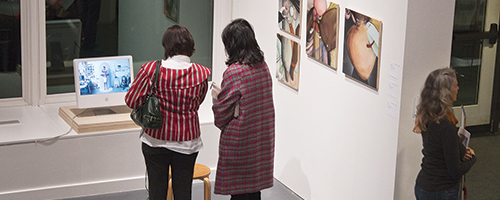Goodbye Fareless Square?
A citizen committee on TriMet has released a report earlier this month that recommends the mass transit provider consider significantly changing the downtown Fareless Square.
Citizens Advisory Committee (CAC) on the Budget, a committee designed to provide feedback to TriMet, released their annual report April 13, which advocated changing Fareless Square for terrorism-related security concerns as well as fare evasion.
While specific plans to change Fareless Square are not yet in place, it could include anything from “changing the hours of operations, areas of service, keeping it exactly as it is or eliminating it altogether,” according to TriMet spokeswoman Mary Fetsch. The process to determine what specifically will change will take place over the next year.
The report specified that safety was a main concern when looking at the issues surrounding Fareless Square. According to their report, “many potential attractive targets to terrorists, such as Rose Garden, PGE Park and the Steel Bridge, are within Fareless Square.” The CAC on the Budget stated that these targets are especially of concern following the Madrid train bombing last spring.
TriMet has already begun attempting to make the system more secure in the light of recent terrorism. For example, at the Rose Quarter stop, trashcans were removed because it was not possible to see what they contained. This was seen as a risk by TriMet because it would be possible for an explosive devise to be placed inside without it being visible to passersby.
Because riders within Fareless Square do not carry transfers, fare inspectors “are limited in their ability to confront security concerns before they escalate,” according to the committee report.
“A fare allows a police officer to approach a person riding on the system. It is an opportunity for engagement. Having such an open system is a concern,” Fetsch said.
The ongoing issue of fare evasion is also a concern. Currently there is no research as to how many people take advantage of Fareless Square or if fare evasion has worsened over the last decade. According to the TriMet web site, in 1991 the cost of fare evasion was estimated at $310,000-325,000. Research on this and other issues will be updated over the next year to determine if fare evasion has worsened.
The CAC on the Budget recommended introducing free circulator buses within Fareless Square that would “require passengers on all bus and rail through-routes to have paid fares at all times.” The hope is that this would decrease the incidences of fare evasion. In order to help reduce “undesirable’ behavior” within Fareless Square, the committee requested that TriMet rewrite its exclusion policy so that it is straightforward and easy to understand.
“We have not yet designed a process to examine this issue. In the next few months we need to determine how you start the conversation,” said Fetsch.
This is not the first time that Tri-met has proposed changing Fareless Square, or eliminating it altogether. In 1986 a proposal was taken to the public to eliminate Fareless Square, but was dropped due to public opposition.
“That’s part of the research. What do other cities have? Is it just a certain mode, or is it all modes?” said Fetsch.
Fareless Square began in 1975 with the implementation of free fares in the downtown area. In 2001 the Lloyd area was added to up the total fareless area to 330 blocks.
According to the TriMet web site, Fareless Square was created to promote transit riding by providing people who do not currently use transit an opportunity to try it, reduce auto-generated air pollution by eliminating short auto trips, help provide higher mobility and coordination for travel in downtown and provide more opportunities for travel within downtown to retail, financial, hotel and entertainment areas.
The possibility of changing Fareless Square has not yet been identified as part of the Transit Investment Plan, a five-year plan annually updated in order to show where TriMet’s investments are.




